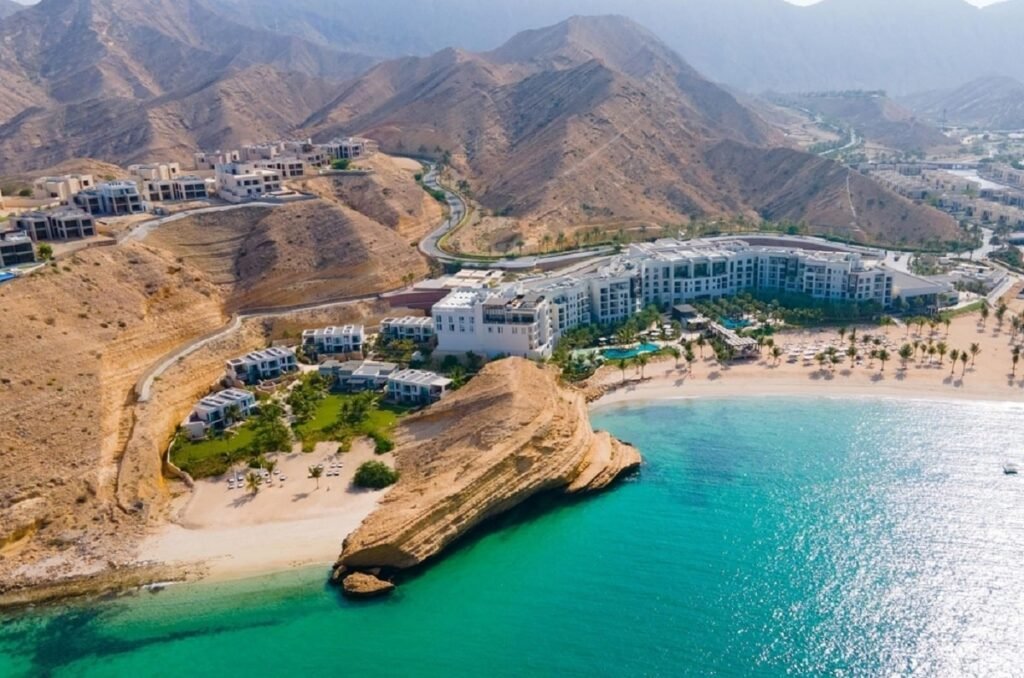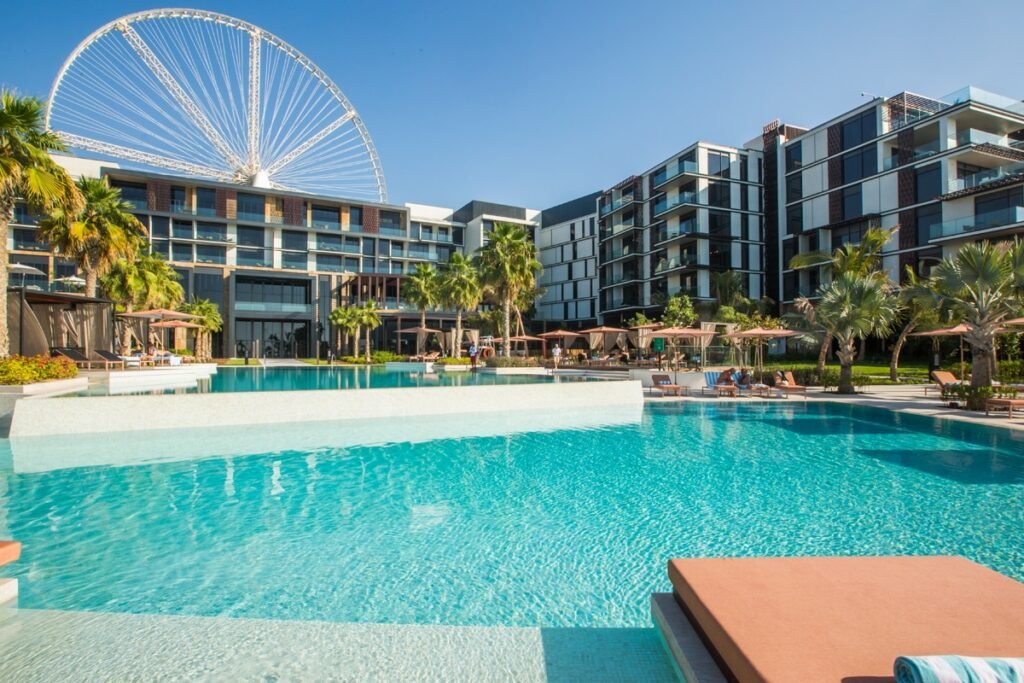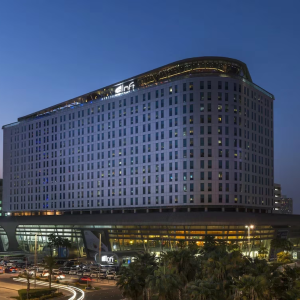Oman is making waves across the Middle East and beyond, as the Sultanate’s hotel industry posts record-breaking numbers. In the first four months of 2025, Oman hotel have reported a striking revenue of $283.7 million (RO 109.2 million), a remarkable 17.3% growth compared to the same period in 2024.
More than just a financial milestone, this uptick reflects deeper trends in travel behavior, tourism marketing, and Oman’s evolving global presence as a top-tier destination. With 831,751 guests staying in three- to five-star hotels—an 8.6% increase from last year—the country is now enjoying one of its most vibrant tourism seasons in recent memory.
This strong start underscores the success of Oman’s tourism strategy under Vision 2040, which aims to diversify the economy and reduce dependence on oil revenues by investing heavily in tourism, heritage, and hospitality.

Occupancy Rates Up, Profitability Rises
One of the most encouraging metrics for Oman’s hotel industry is the sharp rise in occupancy rates, which grew from 53.4% in April 2024 to 61.1% in April 2025—a significant 14.4% jump.
For hoteliers, this increase not only signals growing demand but also allows for better revenue per available room (RevPAR), a core profitability metric in the industry. When hotels fill more rooms at competitive rates, their margins improve, even before accounting for additional revenue from restaurants, events, and other services.

This increase in occupancy suggests that travelers are not just arriving but are staying longer, spending more, and choosing higher-end accommodations.
Where Are Visitors Coming From?
The diversity in guest nationalities is another strong indicator of Oman’s international tourism appeal. Oman is not just attracting regional travelers, but is clearly expanding its footprint globally.
- Oceania led the charge with an astounding 57.8% growth, reaching 18,124 guests
- Africa followed closely with a 57.6% rise, totaling 5,993 guests
- European arrivals grew by 19.9%, bringing in 314,535 visitors
- Americas recorded a 19.1% increase, reaching 28,843 guests
- GCC countries contributed 53,642 visitors, a 12.6% increase
- Asian tourists also rose by 5.4%, totaling 114,426 visitors
Interestingly, there was a slight decline in domestic tourism. Omani guests dropped marginally by 0.7% to 238,895, and Arab (non-GCC) guests fell by 2.3% to 32,072.
While this small dip doesn’t undermine the overall growth, it does highlight an opportunity for the hospitality sector to re-engage with local and regional travelers.
[Backlinks: muscatdaily.com, arabianbusiness.com]
Why Tourism in Oman Is Surging
Strong Global Positioning

Oman has been strategically positioning itself as a unique destination that combines rich heritage, breathtaking natural landscapes, and genuine cultural experiences. Unlike the hyper-commercialized tourism models of some neighboring countries, Oman appeals to travelers seeking authenticity, tranquility, and exploration.
Improved Infrastructure
The country’s efforts to expand its tourism infrastructure—upgraded airports, expanded hotel inventory, better road networks—are paying off. Enhanced connectivity, especially via Oman Air and low-cost carriers, has opened doors for long-haul and short-haul tourists alike.
New international routes and eased visa regulations are making it easier than ever for tourists to explore the Sultanate, from Muscat’s coastal beauty to Salalah’s tropical landscapes.
Events and Experiences
Events such as the Muscat Festival, Salalah Tourism Festival, and the growing number of adventure sports, desert marathons, and cultural showcases are attracting both regional and global attention. These experiences allow travelers to engage with the local culture in meaningful ways, often leading to extended stays and return visits.
The Ripple Effect on Oman’s Economy
The boom in hotel revenue is more than just good news for hoteliers. It has a ripple effect across various sectors:
- Local Employment: The hospitality sector is a significant employer, and rising hotel occupancy means more jobs in reception, culinary arts, housekeeping, and management
- Transport Services: Tour operators, taxis, car rental agencies, and even domestic airlines benefit from the increase in tourist numbers
- Retail and F&B: Shopping malls, souks, restaurants, and cafes all enjoy increased footfall and higher revenues
- Cultural Enterprises: Museums, heritage villages, and artisans selling local crafts gain from the growing interest in Omani traditions
As Oman continues to shift toward a more diversified economy, tourism is emerging as one of the most dynamic contributors to GDP and foreign exchange earnings.
Sustainability and Cultural Preservation
Oman’s tourism strategy has consistently emphasized sustainable tourism—development that respects the environment, protects cultural heritage, and benefits local communities. Many hotel developments are incorporating eco-friendly practices, such as energy-efficient architecture, waste reduction systems, and water conservation.
This approach not only protects Oman’s natural beauty but also aligns with the expectations of modern travelers, especially those from Europe and Oceania, who tend to prioritize sustainability when choosing destinations.
Challenges on the Horizon
Even with all this positive momentum, the industry must remain vigilant. Here are a few challenges Oman will need to address:
- Domestic Travel Decline: Re-engaging local and regional tourists through special packages, loyalty programs, and localized campaigns will be key
- Capacity Limits: As demand surges, existing hotel and transport infrastructure must scale efficiently to avoid overcrowding or service issues
- Off-Peak Strategies: Maintaining visitor numbers during non-peak months will require creative seasonal offerings, like wellness retreats, cultural tours, and conferences
Opportunities for Growth

The current growth trajectory opens up new avenues for investment and innovation:
- Niche Travel Segments: Wellness tourism, eco-tourism, and adventure travel are growing globally. Oman is well-suited to capitalize on these trends
- Digital Transformation: Smart tourism tools—virtual tours, multilingual apps, AI-driven travel planners—can further enhance the visitor experience
- Public-Private Partnerships: Continued collaboration between government bodies and the private sector can lead to better infrastructure, marketing, and services
Final Thoughts: A Promising Future for Omani Tourism
With $284 million in hotel revenues, growing occupancy rates, and an 8.6% increase in visitors, Oman has firmly planted itself on the global tourism map. These gains are not accidental—they’re the result of well-executed strategies, visionary leadership, and the country’s innate appeal.
Looking ahead, Oman has the potential to evolve into one of the Middle East’s most beloved destinations—not just for its scenic beauty, but for the authentic experiences it offers.
If the industry continues its path of innovation, sustainability, and cultural celebration, this isn’t just a good year—it’s the beginning of a golden era for Omani tourism.
Do follow UAE Stories on Instagram
Read More: Dubai’s RTA Shines Bright with 7.6 Million Eid Passengers














